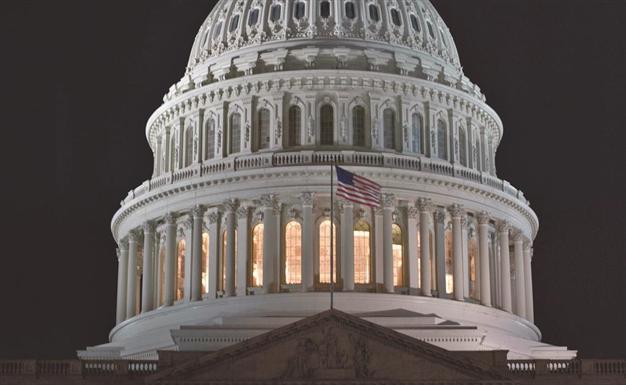US must cut $2 trillion over 10 years to balance its debt
WASHINGTON - Reuters

This Sept 9, 2013, file photo shows the US Capitol in Washington. The Congressional Budget Office says the US public debt will balloon to 100 percent of the nation’s economic output in 25 years if no action is taken. AFP photo
U.S. lawmakers are far from finished with the job of deficit-cutting, the Congressional Budget Office has warned o, saying that $2 trillion in additional savings is needed over the next 10 years just to stabilize long-term U.S. debt.In new long-term forecasts that will intensify the fiscal debate in Washington as critical deadlines loom, the CBO said on Sept. 17 that the U.S. public debt will balloon to 100 percent of the nation’s economic output in 25 years if no action is taken, increasing the risk of another financial crisis.
That’s up from about 73 percent this year and a 40-year historical average of about 38 percent. And the picture looks worse if Congress does away with the “sequester” across-the-board spending cuts now in place, the non-partisan CBO said.
Revenue growth from a recovering U.S. economy and a January tax increase on the wealthy are helping to shrink near-term deficits, but this is not enough to overcome the rising pension and health care costs associated with the aging Baby Boom generation, CBO director Doug Elmendorf said. “The bottom line remains the same as it was last year. The federal budget is on a course that cannot be sustained indefinitely,” Elmendorf told a news conference.
$4 trillion cut to reduce debt to 31 pct of GDP
In order to cut U.S. debt levels significantly, CBO said it would take an additional $4 trillion worth of cuts over the next decade. That would shrink U.S. public debt in 2038 to 31 percent of gross domestic product (GDP), below the 40-year average.
While the deficit is still forecast to fall from around 4 percent of GDP this year to a sustainable 2 percent in 2015, it will then start rising again. CBO projected that with no changes in tax and spending laws, the deficit will reach almost 3.5 percent of GDP by 2023 and hit 6.4 percent by 2038. Public debt will make a similar dip to 68 percent in 2018 before rising again.
The latest forecasts come as lawmakers race against a Sept. 30 deadline to pass new government spending authority to prevent a government shutdown. Congress also faces a mid-October deadline to raise the $16.7 trillion federal debt limit to avoid a potential default that would roil global financial markets.
The deadlines have also become intertwined with Republicans’ desire to delay or defund “Obamacare” health insurance reforms, several of which are due to launch on Oct. 1. House Budget Committee Chairman Paul Ryan wasted no time in pinning part of the deficit blame on President Barack Obama’s signature health care law.
“The report reiterates the obvious: government spending, especially on health care, is driving our debt. And Obama care will not solve the problem. The law was a costly mistake,” Ryan said.
















